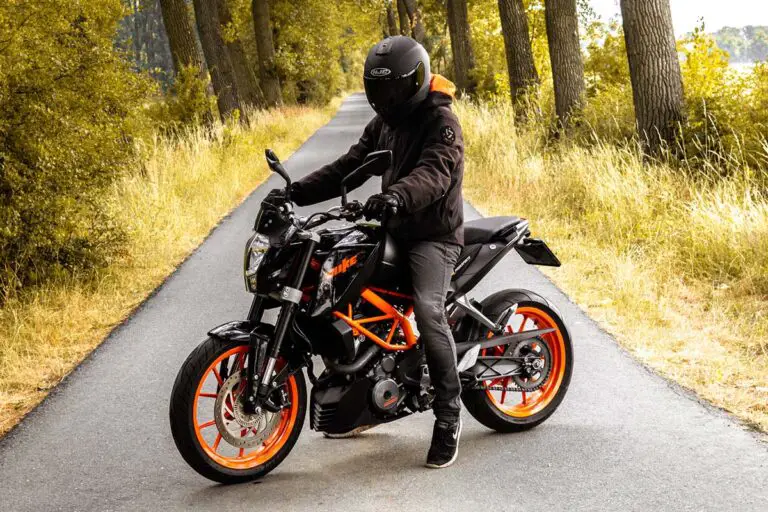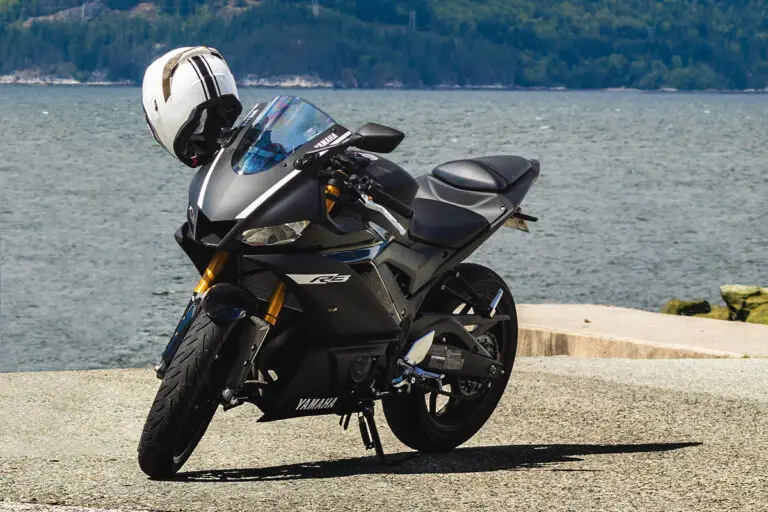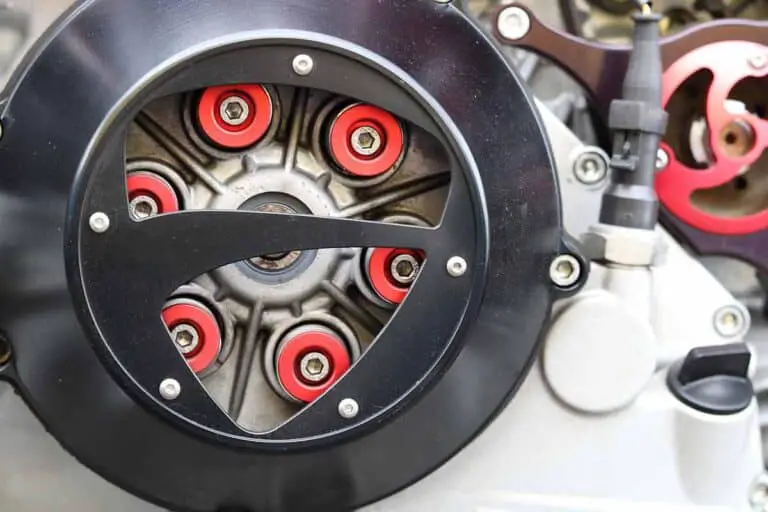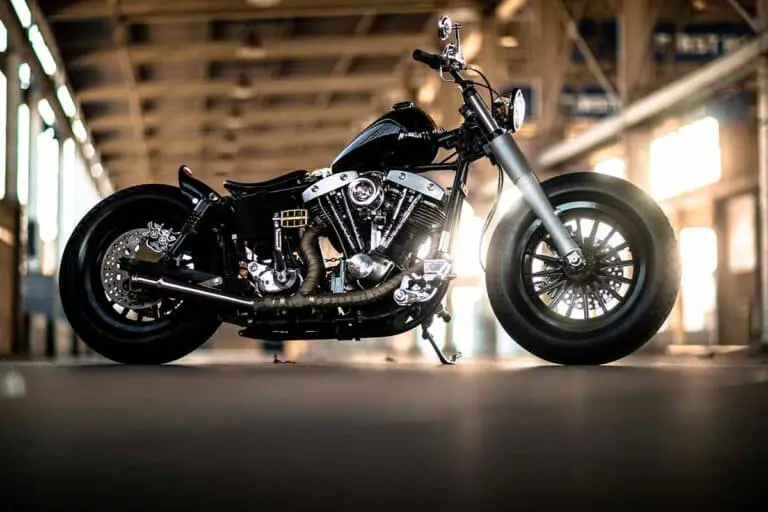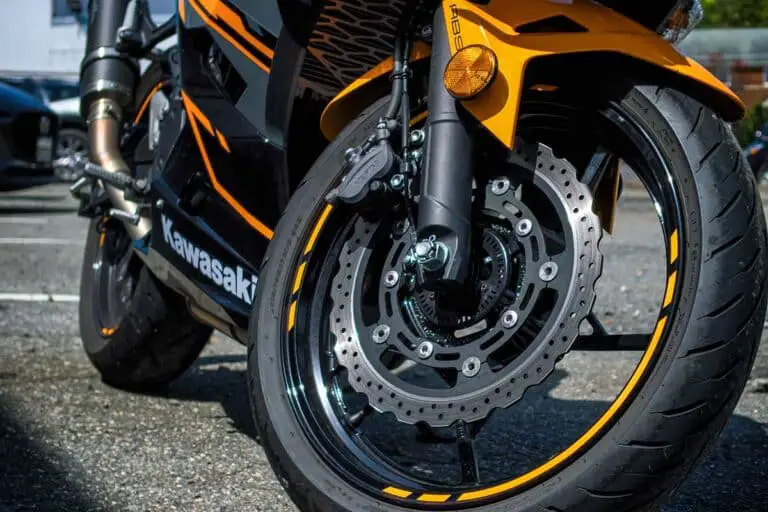Touring vs. Cruising Motorcycles: Differences
Disclosure: We may get commissions for purchases made through links in this post.
When asked to distinguish cruisers from touring motorcycles, a beginner may say they are both “stout motorcycles with formidable engines.” While this description speaks the truth about these machines, there is so much more to them than just bulk and power.
Touring motorcycles are large-displacement behemoths designed for all-day tours (hence, the name) and long-term comfort. Conversely, cruisers are heavy motorbikes fitted with windshields, lowered seats, forward controls, and high-torque power mills, intended for weekend adventures and urban driving.
Nowadays, these characteristics tend to overlap, given advancements in motorcycle design and technology. But some aspects — like the tourer’s upright riding position and the cruiser’s more aggressive stance — remain untouched and keep these bikes true to form.
If you are curious about what other attributes set the two apart, read on and discover more about touring and cruiser motorcycles in this guide.
Cruiser vs Touring Motorcycle Comparison
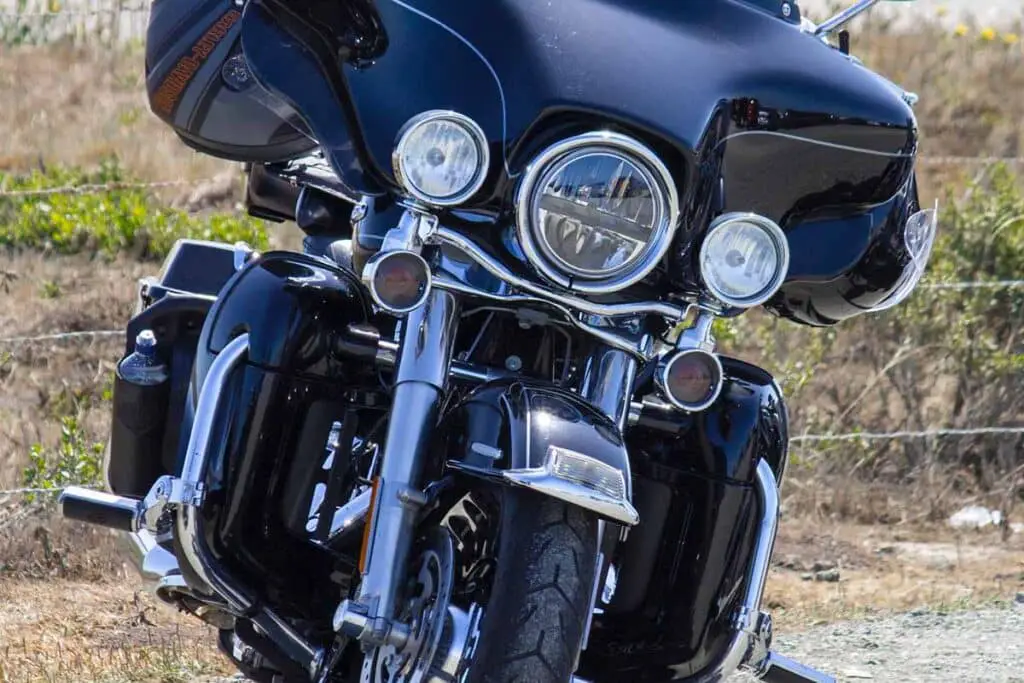
Application and Travel Options
Essentially, these motorbikes are both used for traveling but not for racing. They also differ in many other facets (strengths and weaknesses included).
Cruisers and tourers alike do well on tarmac, so riding one or the other in city traffic would not matter as much. However, it is in lengthy drives that their differences become apparent.
Cruisers are general-purpose motorcycles ideal for short to mid-length rides around town (from city rides to leisurely highway spins).
They are capable yet beginner-friendly, making them appeal to youngsters and casual riders. They can be used for ‘highway strolls,’ albeit not for miles on end.
Inversely, touring bikes are often used as daily drivers and are best for long-distance driving and cross-country trips (after all, their layout is intended for expeditions).
Some enthusiasts refer to them as ‘adventure bikes’ (although this type is an entirely different beast) due to their ability to cover greater distances at higher speeds than cruisers.
Design
In terms of styling, cruisers tend to be more flashy. But this is not to say that their overall styling is impractical.
They usually have a lower seat height, raked-out front forks, higher footpegs (view on Amazon), bulky, wide frames, striking features, a slightly-lifted fuel tank, and an upright, forward-leaning riding position. To add, cruisers are deemed one of the most comfort-oriented two-wheelers.
Touring motorcycles, on the other hand, usually sport a full fairing and come standard with a windshield, highway pegs, and ample-height handlebars (to name a few).
You can take your motorcycle facelift a notch higher by adding an adjustable back support, heated grips, and Milwaukee Leather SH66602 Zip-Off Studded Motorcycle Saddlebags (view on Amazon).
Storage
This area is one of the biggest differentiators of cruiser and touring motorcycles. Between the two, the latter obviously provides riders with more storage space.
Touring motorcycles provide tons of repositories — from under-seat compartments to top boxes to saddlebags — where you can safekeep riding essentials. Meanwhile, cruisers typically only offer an under-seat compartment (if not a tool kit nook near the tailpipe).
Fuel Efficiency
Depending on displacement and trim, cruiser and touring motorcycles do provide adequate gas mileage (although they are far behind a sport racer’s fuel efficiency). The heavier a bike gets, the more its power-to-weight ratio is reduced — a facet that directly affects its fuel consumption.
Based on this premise, it would be quite unlikely for cruisers and tourers to have impressive fuel mileage figures. Case in point, a cruiser has an estimated average of 33—64 mpg (3.8—7.1 L/100 km), while a touring motorcycle has approximately 54—65 mpg (3.6—4.3 L/100 km).
Note that these averages are not fixed and can be true for either type of motorcycle. Ultimately, how efficiently a motorbike makes use of fuel heavily relies on the following non-exhaustive factors:
Tire Pressure
Correct tire pressure not only improves on-road grip but also affects gas mileage. That said, an underinflated or out-of-spec pair of tires can take away from your two-wheeler’s fuel mileage (in addition to causing impaired handling and uneven tire wear).
Rider Weight & Cargo
Even within the payload limit of your two-wheeler, extra weight can adversely affect its fuel consumption. The reason is that your engine works twice as hard under added weight (and, therefore, in need of more fuel) as opposed to if you were riding solo.
Modifications
Although claimed gas mileage does not always match real-world results, what is certain is that how motorcycles are specced from the factory is what delivers these figures. Hence, changing gear settings (for instance) would almost automatically result in your motorcycle drinking more fuel than it usually does.
Overall State or Tuning
In stock form, a well-maintained air-fuel ratio makes optimal fuel efficiency for your bike possible. Modified, the presence (or lack of) fuel tuners will dictate how well your two-wheeler utilizes fuel. In either scenario, keeping your motorcycle and its different systems in tip-top condition is crucial if you want to get the best gas mileage out of your wheeler.
Riding Conditions
Despite their grunt and size, cruisers and touring motorcycles are not impervious to freezing and inclement weather conditions. Riders can still opt to take either motorbike for a spin in these conditions. However, extra caution is strongly advised.
Undeniably, riding any type of motorcycle on dry pavement is safer and more convenient than driving in harsh climatic conditions.
Handling
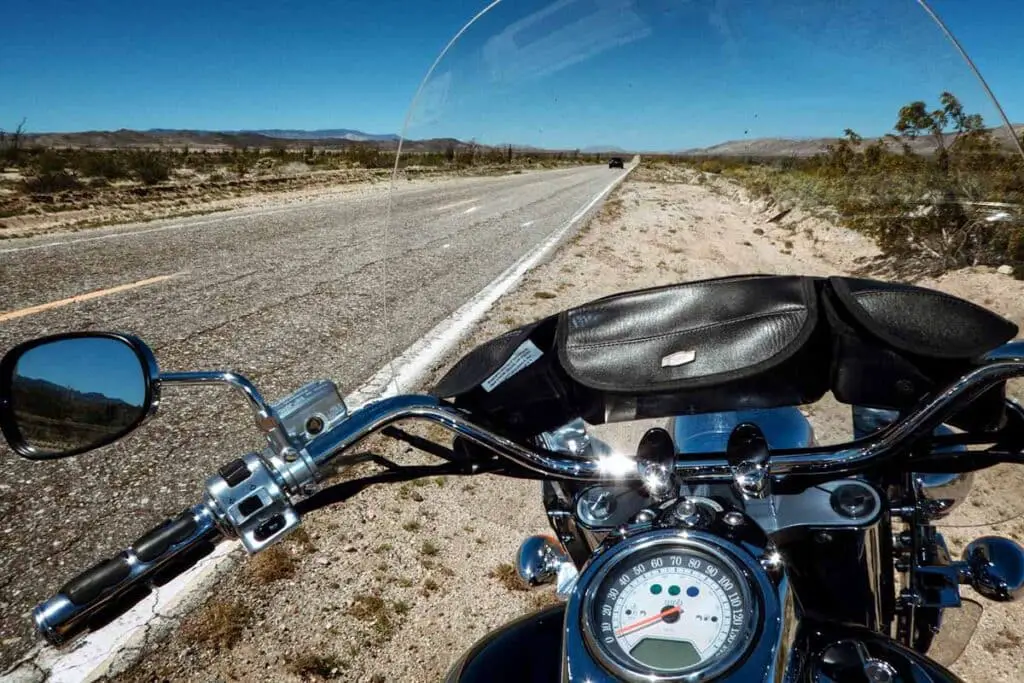
When comparing motorcycle cruiser vs touring handling, both two-wheelers are adept in bumper-to-bumper traffic situations. Things can get subjective when it comes to long rides (where touring bikes have the upper hand).
Nonetheless, both motorbikes are equally competent. Plus, their inherent attributes further improve with weight savings, performance enhancers, and the right mods.
Generally, cruisers offer easy handling, responsive braking, superior cornering, and more power than tourers. The latter can be described in a similar light. However, they are more recognized for their engines with low-end horsepower and better traction control.
Contrarily, touring motorcycles have a puny top speed rating when pitted against same-class segments due to heft. Thankfully, they offset this drawback by having better acceleration than cruisers.
Customization
Modifications on either motorcycle range from being conservative to going ham with performance enhancers, gadgetry, and aftermarket parts.
Both are great platforms for such. But between the two, a cruiser’s chassis provides more room for add-on features. Not to mention its clean styling makes it the perfect ‘blank canvas’ for a project build.
Touring motorbikes offer a rider similar options. However, they usually come with a slew of creature comforts fresh off the production line — somewhat limiting the number of mods that can be performed on the two-wheeler.
Upgrading stock inclusions like the saddle, handlebars, front forks, sideview mirrors (view on Amazon), and wheels (among others) is a different matter altogether.
Maintenance
Skimping on motorcycle upkeep will not work for both bikes since they are exposed to the elements.
Their styling typically employs a lot of contours and recesses on the fairing (among other things) — areas prone to dirt buildup and corrosion if not cleaned out regularly. Hence, the design of a cruiser and touring motorcycle will undoubtedly be a misfit for indolent riders.
Both motorcycles are equally reliable in mint condition. But the moment you start riding them, touring motorcycles would probably warrant more thorough maintenance — just because it is exposed to dirt, road salt, sand, and other contaminants for longer periods. (Note that the reverse may be true if you live in Arizona and use your cruiser for your daily commute).
Safety
Even for same-class motorcycles, it would be difficult to determine one type that is categorically safer than the other (in truth, there is no such thing).
Whichever two-wheeler you ride (cruiser and touring motorcycles included), the experience is equally risky due to the lack of a barrier between you and other motorists.
Unlike scooters and small-displacement motorbikes, cruisers and tourers do not look as diminutive on the road. That added heft helps a great deal in making riders more noticeable for other commuters who would have otherwise missed them out while speeding along the freeway.
But that’s about the benefit of having a more remarkable presence — it still does not make these motorcycles or their riders impregnable. Therefore, gearing up for every ride is of the essence (whether riding casually or otherwise).
Comfort
If cruisers and tourers were ridden exactly the same way and for the same number of miles, they would probably rank the same in terms of rider comfort. But if the comparison were to be grounded on long-distance driving, touring bikes would be superior to cruising motorcycles.
While cruisers’ duplex frame and top-of-the-line suspension make for greatly reduced road vibrations and undeniable long-term comfort, the latter is not really among its top priorities. It is quite the reverse with a touring motorcycle’s layout.
Even standard trims are functional, ergonomic, impressively agile, and equipped with loads of creature comforts from the factory (unlike cruisers).
However, there are modern iterations of these motorbikes that tend to blur the distinction between the two. Harley Davidson’s Electra Glide and Road King series can be easily mistaken for a cruiser with their standard inclusions and overall feel — had it not been for the touring motorcycle’s more upright riding position.
Price
Between cruising and touring motorcycles, neither is more expensive nor cheaper. The pricing range for both bikes ultimately depends on class, styling, trim, and consumer demand. To prove this point, even online sources and enthusiasts are split as to which two-wheeler has the heftier price tag.
Cruisers are believed to be more costly since they are typically more stylish and equipped with performance-enhancing features.
In like manner, touring motorcycles are thought to be expensive due to the inclusion of creature comforts not commonly found in other motorcycle types. A good example of the latter is the Harley-Davidson CVO Limited, retailing for close to $50,000.
Shared Benefits & Drawbacks

Pros
- Between cruiser vs touring motorcycles, both offer relaxed driving dynamics and are engineered for a stress-free riding experience.
- They are well-known for their air cooling system, powerful, large-displacement engine, aggressive attitude, and handsome design.
- Upgradability is not an issue with either motorcycle type — aesthetics can be greatly improved through various upgrade kits and custom accessories.
- Touring and cruising motorcycles both support solo and pillion (view on Amazon) riding.
- Being heavier than most motorcycle types, they are more stable on pavement and at high speeds.
- They have some of the beefiest engines offering impressive mid-range pull and low-end torque.
Cons
- Both cruisers and touring motorcycles are on the heavy side, typically tipping the scale at an average of 500—700 lbs. for cruisers and 850—900 lbs. for tourers.
- With big, powerful engines come lots of vibration, which can be irritating for some riders.
- Brand-new, both touring and cruising motorcycles are pretty expensive. Maintenance costs are also up there — even for secondhand units.
Conclusion — Differences: Touring vs. Cruising Motorcycles
There are many more nuances to what sets cruiser and touring motorcycles apart other than the information shared in this article.
These differences may not be apparent to the untrained eye. But for an ardent motorhead, it would be easy to see that dissimilarities between these two bikes lie beyond their riding position, inclusions, and style.
Hopefully, today’s guide helps you differentiate one from the other — as you will require this discerning ability when deciding on your next adventure buddy.

